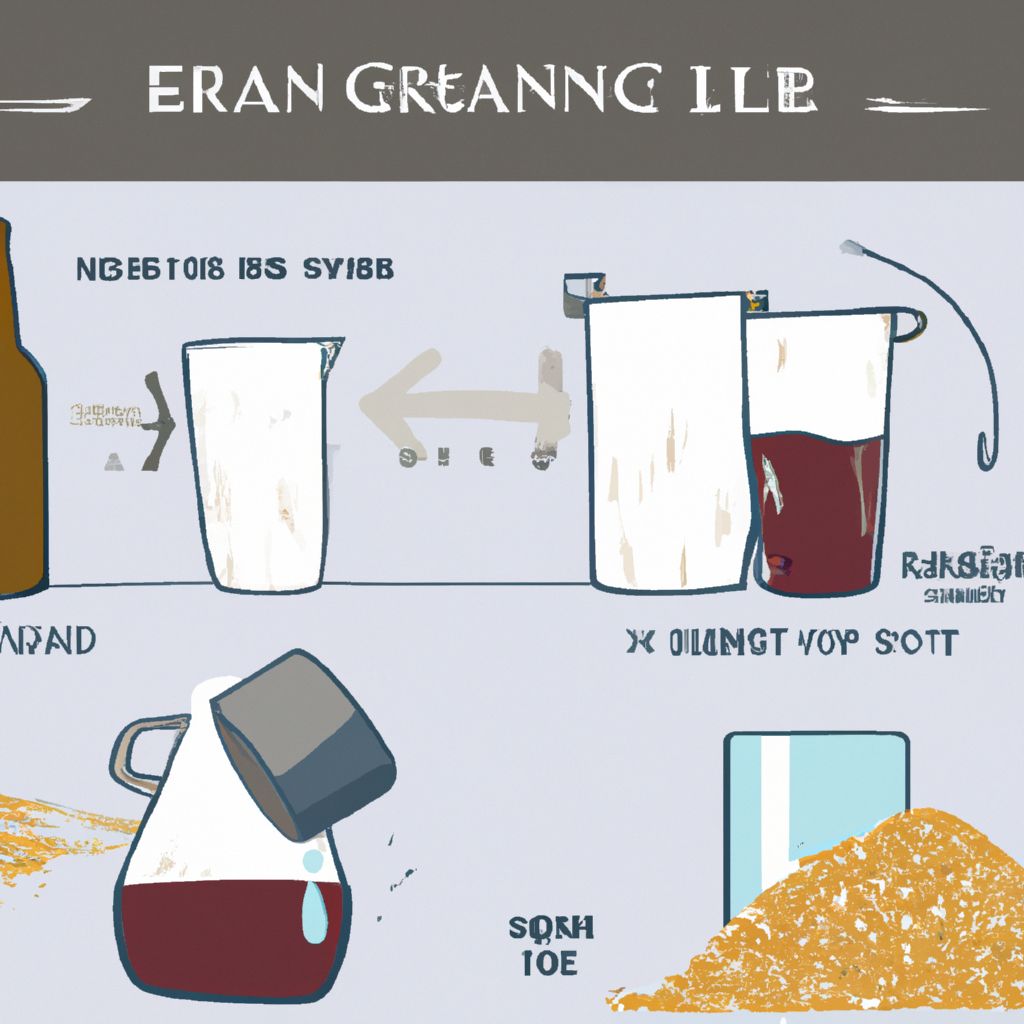Dive into the world of homebrewing with "From Grain to Glass," an essential guide for beginners and seasoned brewers alike. Learn the art of crafting delicious beers, from selecting ingredients to mastering techniques, and transform your passion into a bubbling, thirst-quenching reality.
Why Homebrewing?
Homebrewing is a rewarding and creative hobby that allows you to craft unique beers tailored to your taste buds. It's a chance to experiment with flavors and styles, and it often leads to a deeper appreciation for the hard work and dedication that goes into producing quality brews. Plus, it's a fun way to connect with fellow enthusiasts and share your creations with friends and family.

Getting Started: The Basics
Before you jump into homebrewing, it's essential to familiarize yourself with the process, gather the necessary equipment, and understand the ingredients involved. Here's a quick overview:
- Equipment: Acquire the basic homebrewing equipment, including a brewing kettle, fermenter, airlock, siphon, hydrometer, thermometer, sanitizer, and bottles or kegs for storage.
- Ingredients: Understand the core ingredients in beer, such as malted barley, hops, water, and yeast. These ingredients can be sourced from local homebrew shops or online retailers.
- Process: Learn the essential steps in the brewing process, including mashing, lautering, boiling, fermenting, conditioning, and bottling or kegging.
- Sanitation: Proper sanitation is crucial to avoid contamination and off-flavors in your beer. Always clean and sanitize your equipment before and after each use.
Exploring Different Beer Styles
One of the joys of homebrewing is the opportunity to experiment with various beer styles, from crisp pilsners to hearty stouts. As a homebrewer, you can customize your recipes to fit your taste preferences or even create entirely new styles. Here's a table of some popular beer styles to consider:
| Beer Style | Description | Characteristics |
|---|---|---|
| IPA (India Pale Ale) | An intensely hoppy and flavorful ale | Bitter, floral, and citrusy |
| Stout | A dark, rich, and roasty beer | Chocolate, coffee, and caramel notes |
| Wheat Beer | A light and refreshing beer made with a high percentage of wheat malt | Fruity, spicy, and effervescent |
| Belgian Dubbel | A malty and complex beer with a rich, fruity character | Dark fruit, caramel, and spicy yeast notes |
Experimenting with Ingredients
Beyond the core ingredients, homebrewers often incorporate additional flavors to create unique and exciting brews. From fruits and spices to coffee and chocolate, the possibilities are endless. When experimenting with new ingredients, it's essential to consider the balance of flavors and how they complement the base beer style.
"Give a homebrewer a beer, and they'll be happy for a day. Teach a homebrewer to brew, and they'll be happy for a lifetime."
Joining the Community
Homebrewing is more than just a hobby; it's a thriving community of passionate enthusiasts who share tips, recipes, and stories. Connecting with fellow homebrewers through local clubs, online forums, and social media can provide valuable insights, support, and inspiration. Participating in homebrew competitions is another great way to showcase your skills and receive feedback on your creations.
In conclusion, homebrewing is an art form that allows you to explore the world of beer in a hands-on, creative way. By mastering the process, experimenting with ingredients, and engaging with the community, you can unlock a lifetime of brewing enjoyment. So, gather your equipment, choose your ingredients, and embark on the exciting journey from grain to glass.


